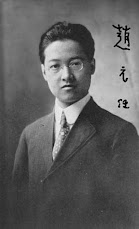Names and surnames in Chinese / Nombres y apellidos en chino
Los nombres chinos suelen estar formados por 3 caracteres chinos.
The 1st Chinese character refer to the surname of the family. The 2nd Chinese character refer to the unified name of the brothers or sisters in the family. Cousins from the same grandfather also shared this same 2nd Chinese character. The 2nd and 3rd Chinese characters together formed the personal name of a Chinese.
El primer carácter chino se refiere al apellido de la familia. El segundo carácter chino se refiere al nombre unificado de los hermanos o hermanas en la familia. Los primos del mismo abuelo también comparten este mismo segundo carácter chino. El segundo y el tercer carácter chino juntos forman el nombre personal de un chino.
Two Tigers (Liang Zhi Lao Hu) Chinese Song
两 只 老虎(Two tigers)
Liǎnɡ zhī lǎohǔ, liǎnɡ zhī lǎohǔ,
两 只 老虎,两 只 老虎,(Two tigers,Two tigers)
Pǎo de kuài, pǎo de kuài,
跑 得 快, 跑 得 快,(running so fast )
8 apellidos vascos = 100 apellidos chinos
Chinese Traditional Festivals / Fiestas en China
 中国传统节日
中国传统节日

[Zhōngguó chuántǒng jiérì]
The 100 "shi" poem / La poesía de los 100 "shi"
Chinese food (typical dishes) / La comida china (platos típicos)
Chinese food is an important part of Chinese culture. Traditional Chinese dishes are famous for their color, aroma, taste, meaning, and appearance.
La comida china es una parte importante de la cultura china. Los platos tradicionales chinos son famosos por su color, aroma, sabor, significado y apariencia.
Here are the 15 most popular Chinese dishes among the Chinese:
Aquí están los 15 platos típicos chinos más populares entre los chinos:
Chinese food / Comida china
食物 [shíwù]
The four great inventions / Los cuatro grandes inventos
Big China Map / Mapa de China Grande
 Many times I have trouble finding a map of China large enough to show well different places to my students. In the link I share with you a good one (locality names in Chinese). Enjoy!
Many times I have trouble finding a map of China large enough to show well different places to my students. In the link I share with you a good one (locality names in Chinese). Enjoy!
Muchas veces tengo problemas para encontrar un mapa de China lo suficientemente grande como para mostrar bien a mis estudiantes los diferentes lugares. En el enlace comparto uno bastante bueno (nombres de localidad en chino). ¡Disfruta!
8 cuisines in China / 8 cocinas típicas de China
Although Chinese cuisine is popular all over the world, the version we are used to is very different from the authentic cuisine of China. What we know here is usually a mixture of different elements of Chinese cuisine with a lot of Western ingredients and styles.
Aunque la gastronomía china es popular en todo el mundo, la versión a la que estamos acostumbrados difiere mucho de la auténtica cocina de China. La que conocemos aquí suele ser una mezcla de diferentes elementos de la cocina china con gran cantidad de ingredientes y estilos occidentales.
The Forbidden City (Beijing) / La Ciudad Prohibida (Pekín)
The Forbidden City in Beijing served as the imperial palace for 24 emperors during the Ming and Qing dynasties (1368-1911). Surrounded by a 52-meter-wide moat and a 10-meter-high wall are more than 8,700 rooms. It was listed by UNESCO as a World Cultural Heritage Site in 1987.
北京 Běijīng
Beijing (北京 [Běijīng]) es la capital de China. Es la segunda ciudad china más grande por población urbana (unos 20 millones) después de Shanghai y es el centro político, cultural y educativo de la nación. Beijing también es una ciudad histórica, con muchos lugares de interés, como la Ciudad Prohibida (故宫 [Gùgōng]), el Palacio de Verano (颐和园 [Yíhéyuan]), etc.
象棋 [xiàngqí] Chinese Chess / Ajedrez chino
How to write Chinese characters (techniques) / Cómo escribir caracteres chinos (técnica)
Talking about the weather / Hablando del tiempo
En la mayoría de idiomas y culturas, un tema muy socorrido para iniciar conversaciones es hablar del tiempo atmosférico. ¿Cómo hacerlo en chino? Aquí tienes algunas expresiones útiles.
明天天气怎么样?
Míngtiān tiānqì zěnmeyàng?











.jpg)






